Kingdom Animalia Class Arachnida Infraorder Mygalomorphae Scientific name Haplopelma schmidti Rank Species | Subphylum Chelicerata Order Araneae Family Theraphosidae Phylum Arthropoda | |
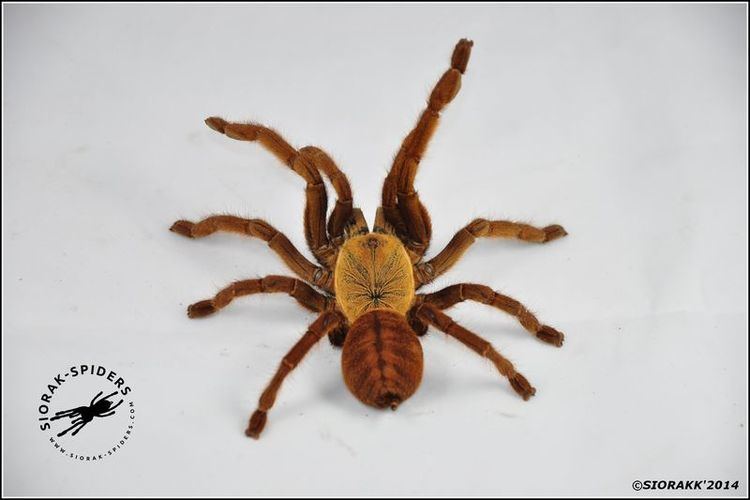 | ||
Similar Haplopelma, Haplopelma hainanum, Ornithoctonus, Selenocosmia, Haplopelma albostriatum | ||
Haplopelma schmidti feeding
Haplopelma schmidti is a species of spider in the family Theraphosidae (tarantulas), found in China and Vietnam. It is one of a number of species known as "Chinese bird spider". Haplopelma huwenum was synonymized with this species in 2008. Spiders under this name and its synonyms have been shown to produce toxins called huwentoxins.
Contents
- Haplopelma schmidti feeding
- Haplopelma schmidti adult female
- Description
- Taxonomy
- Distribution and habitat
- References
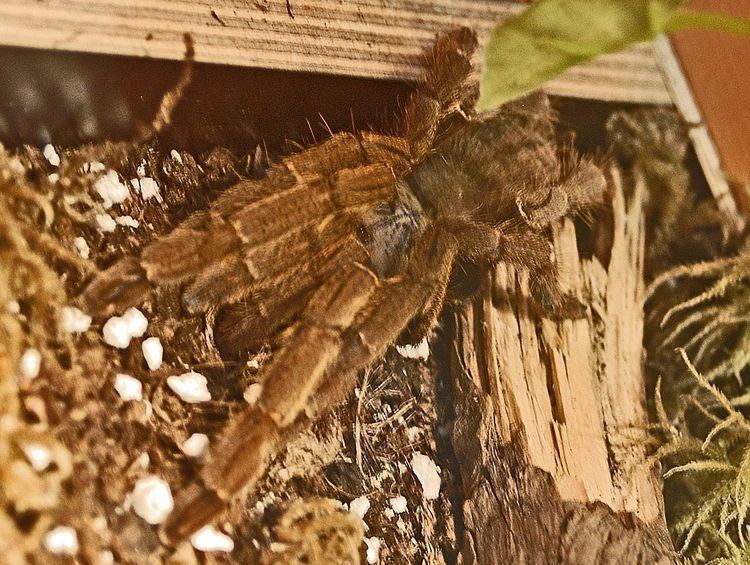
Haplopelma schmidti adult female
Description
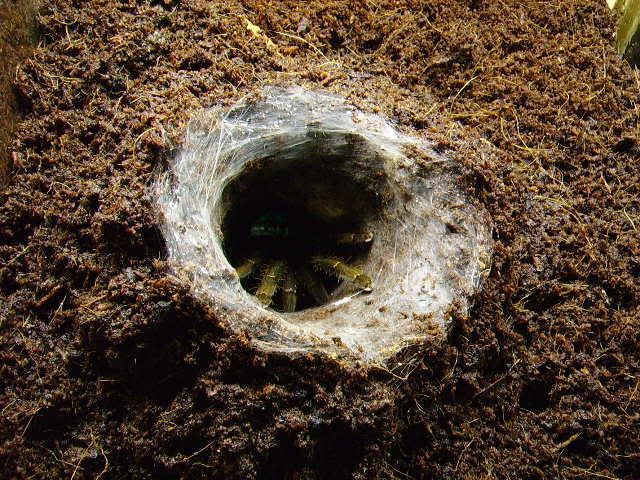
Haplopelma schmidti resembles H. hainanum, but can be distinguished by its dark yellow-brown body and the shorter length of the "thorns" on the forward-facing (prolateral) side of the maxillae. The carapace (upper surface of the cephalothorax) is dark yellow-brown; the abdomen is similarly coloured, with black stripes running across it and a black stripe down the centre of the upper surface.

The female has been described as one of the largest Asian spiders, and is said to be able to live for up to 30 years. It is between 53 and 85 mm long (body plus chelicerae). The first leg is longest, at about 69 mm, the third being the shortest, at about 54 mm. The spermatheca is M-shaped. The male is smaller, between 37 and 44 mm long (body plus chelicerae). The first leg is again the longest, at about 68 mm, the third being the shortest, at about 52 mm. Thus although the body is significantly smaller than that of the female, the male's legs are of a similar length. The tibia of the first leg has a spur on the forward-facing side. The palpal bulb is pear-shaped, with a wide curved embolus.
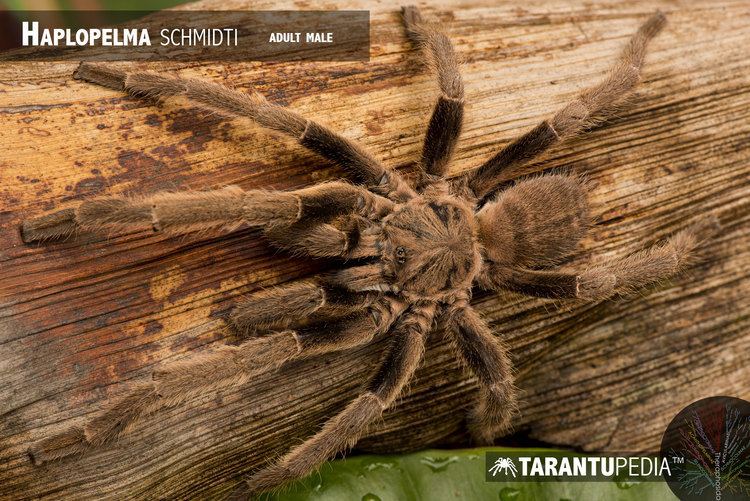
Haplopelma schmidti makes underground burrows, lined with silk, and often with silk alarm lines radiating from the mouth. The spider remains in its burrow during the day, emerging only at night to catch prey, mainly large insects.
Taxonomy
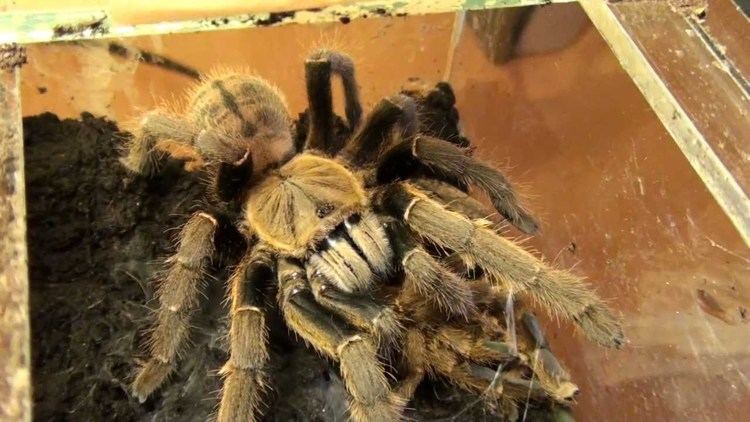
Haplopelma schmidti was first described by V. von Wirth in 1991, based on a single female from Vietnam. Separately, J. F. Wang, X. J. Peng and L. P. Xie described Selenocosmia huwena in 1993, based on a female from Guangxi, China. In 2000, Günter Schmidt first synonymized the two, a decision confirmed by Ming-Sheng Zhu and Rui Zhang in 2008.
Distribution and habitat
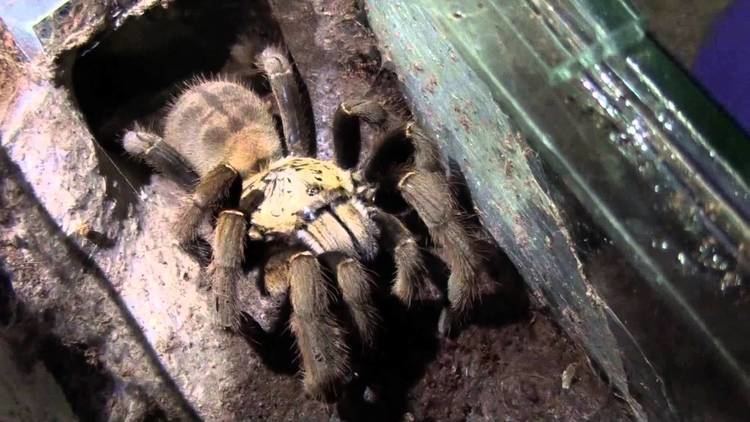
Haplopelma schmidti is known from Guangxi Province in south China and from neighbouring Vietnam. It is found in south-facing mountain slopes, steeply sloping at 60˚ to 85˚.
